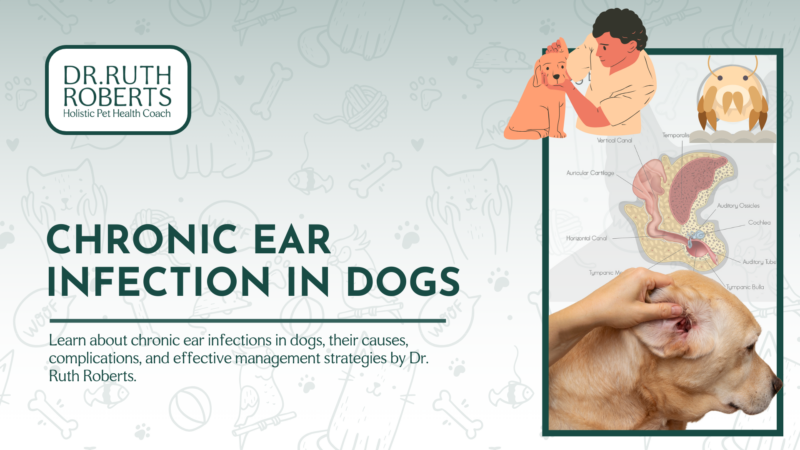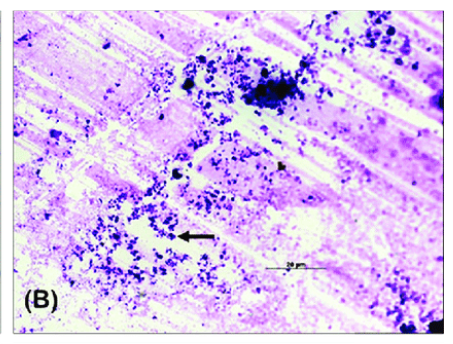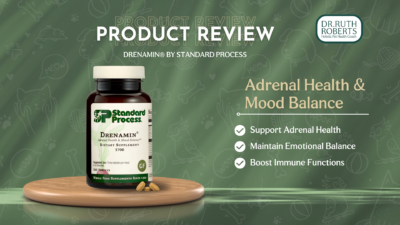Chronic Ear Infections in Dogs
Chronic ear infections, also known as Chronic Otitis Externa, are a frustrating ordeal for both dogs and their owners. Unlike occasional ear infections that can be resolved with prompt treatment, chronic infections keep coming back, disrupting the dog’s comfort and happiness. Understanding the intricate dynamics of chronic ear infections is crucial for effective management and prevention. Let’s explore underlying factors that contribute to the persistence of ear infections and how to manage them.
Table of Contents
The Complexity of Chronic Ear Infections in Dogs
The Fragility of the Eardrum: One of the key factors that can contribute to chronic ear infections is the delicate nature of the eardrum or tympanic membrane. The eardrum can become extremely thin and fragile, especially when inflamed due to infection or other factors. This increased fragility makes it prone to rupture or pop, allowing some of the infectious matter, which includes bacterial and yeast overgrowth, to enter the middle ear. This occurrence can lead to further complications and a prolonged infection cycle.
The Role of Eardrum Rupture: The process of chronic ear infections often involves a cycle where the eardrum ruptures due to inflammation and infection. This rupture creates an avenue for the infectious agents to reach the middle ear, exacerbating the problem. As the external part of the ear infection is treated and appears to improve, the eardrum may seal back over. Trapping “gross goobers” of infectious matter behind it and can contribute to recurrent infections and hamper the healing process.
Chronic ear infections require a comprehensive and vigilant approach. Understanding the fragility of the eardrum, the potential for trapped infectious material, and the importance of appropriate treatment is key. Watch the video below with Dr. Ruth Roberts discussing a patient dealing with chronic ear infections.
What Might Be The Cause of Ear Infections?
A normal ear infection, also known as acute otitis externa, occurs when the outer ear canal becomes inflamed due to bacterial or yeast overgrowth. This condition is typically a short-term issue that can be effectively treated with appropriate medication prescribed by a veterinarian.
Common Cause of Ear Infections in Dogs
Parasites: Parasites like ear mites can infest a dog’s ear canal, leading to irritation and inflammation. These tiny creatures feed on ear tissue and fluids, causing itching, redness, and discomfort. The dog’s natural response to these parasites is inflammation, which aims to eliminate the invaders.

Moisture: This is a common culprit for ear infections in dogs. When the ear canal stays damp or wet for extended periods, it creates an ideal environment for bacteria and yeast to thrive. This is particularly problematic for breeds with floppy ears or dogs that love to swim.
Allergies: Dogs, like humans, can have allergic reactions to various substances. In some cases, allergies can lead to skin problems, and about half of dogs with allergic skin conditions will also develop ear issues. Food allergies, in particular, are known to be linked with ear infections, affecting approximately 80 percent of dogs with food sensitivities.
Bacteria: Bacterial infections are a common cause of ear infections in dogs. Certain types of bacteria, such as Staphylococcus, Pseudomonas, and Streptococcus, can thrive in the warm and moist environment of a dog’s ear canal. When these bacteria overgrow, they can trigger immune response, resulting in inflammation and signs of infection like redness, and swelling.
Yeasts: Yeasts, particularly the species Malassezia, can also contribute to ear infections. Yeasts are naturally present in small numbers in the ears, but when conditions favor their overgrowth—such as excessive moisture or disruption of the ear’s natural microflora—they can cause inflammation and infection.
What Cause Chronic Ear Infections?
An acute ear infection can potentially progress into a chronic ear infection if not properly treated or if there are underlying factors that contribute to its persistence. Several factors contribute to this transition:
Incomplete Treatment: If an acute ear infection is not treated thoroughly, the causative organisms may not be completely eradicated. This can allow them to persist in the ear canal, leading to a recurrence of the infection.
Reinfection: Dogs with a history of ear infections may be more susceptible to future infections. This susceptibility can be due to anatomical factors (such as floppy ears that trap moisture) or underlying conditions (like allergies) that make the ear environment more conducive to bacterial or yeast overgrowth.
Changes in Ear Anatomy: Chronic inflammation can lead to alterations in the ear canal’s structure. This might include thickening of the ear canal lining or the formation of abnormal growths. These changes can create pockets or crevices where bacteria and yeast can hide. Making them more challenging to eliminate.
Resistant Strains: Prolonged exposure to antibiotics or anti-fungal medications can lead to the development of drug-resistant strains of bacteria or yeast. This can make subsequent infections more difficult to treat.
Unmanaged Allergies: Allergies, particularly those affecting the skin and ears, can predispose dogs to ear infections. If the underlying allergy is not properly managed, it can create a recurring cycle of inflammation and infection.
Inadequate Preventative Measures: Failure to implement appropriate preventive measures, such as routine ear cleaning, especially in susceptible breeds, can leave the ears vulnerable to recurrent infections.
Untreated chronic ear infections in dogs might also result in serious complications. This includes the risk of ruptured eardrums due to continuous inflammation and pressure. Potentially allowing the infection to spread deeper. Hearing loss is also a significant concern as chronic infections can damage the delicate inner ear structures. Moreover, if left untreated, the infection can spread beyond the ears, potentially causing systemic illness and complicating treatment.
Managing Chronic Ear Infections
While chronic ear infections can be frustrating, you can can make a substantial difference by following this steps:
- Veterinary Examination: Consulting a veterinarian for accurate diagnosis and treatment recommendations is crucial.
- Medication: Topical or oral medications may be prescribed to combat the infection and reduce inflammation.
- Cleaning: Regular ear cleanings under veterinary guidance can help prevent the buildup of debris and microorganisms.
- Allergy Management: Identifying and managing allergies can play a significant role in preventing recurrent infections.
- Dietary Adjustments: A well-balanced diet can boost the immune system and reduce inflammation, contributing to overall ear health.
Dealing with chronic ear infections can be challenging, but with proper care and management, you can help your beloved canine companion find relief from this persistent issue. Remember, your veterinarian is your partner in ensuring your dog’s health and happiness. By taking proactive steps and seeking professional guidance, you can minimize the impact of chronic ear infections and create a happier, healthier life for your furry friend.
FAQ on Chronic Ear Infection In Dogs
Chronic ear infections in dogs can be managed and treated effectively, but the term “cured” might not always apply in all cases. The goal of treatment is to alleviate the symptoms, reduce inflammation, eradicate the infection, and prevent recurrence. However, the success of treatment and the potential for complete resolution depend on various factors, including the underlying cause of the ear infections and the extent of any complications.
Diagnosis involves a thorough veterinary examination, including ear inspection and often swabs for microscopic evaluation. Treatment may involve topical or oral medications to combat infection, cleaning routines, managing underlying conditions, and addressing any complications.
Yes, regular ear cleaning can help prevent the buildup of debris and moisture. However, it’s important to use veterinarian-recommended cleaning solutions and techniques to avoid causing further irritation or pushing debris deeper into the ear canal.

















